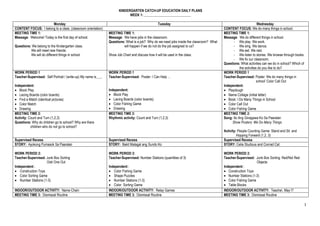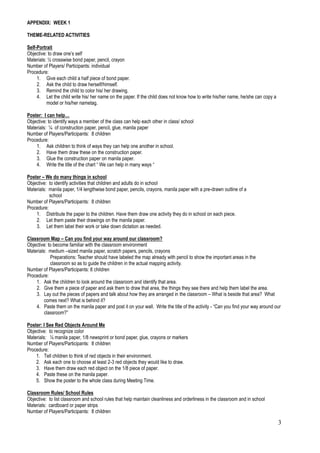The document outlines a week-long kindergarten educational plan focusing on classroom orientation, rules, and various activities that help children understand their school environment and community. Each day includes structured meeting times with welcoming messages, questions, and teacher-supervised work periods filled with hands-on activities such as drawing, song, and games. The curriculum emphasizes social interaction and the development of fine motor and cognitive skills through a variety of guided and independent tasks.











